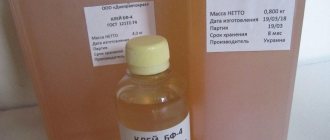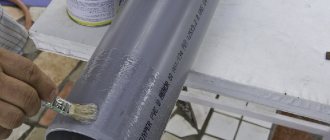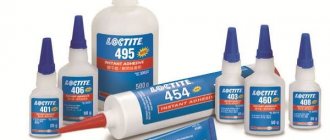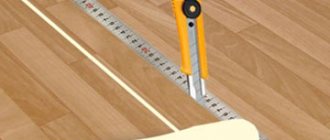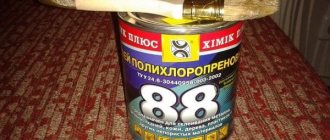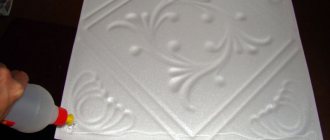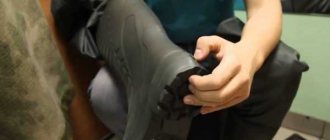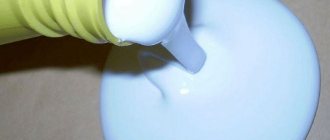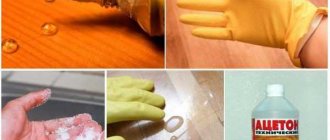What glue is best to use
One of the distinctive features of MDF panels is that they, like any other material containing wood, are resistant to moisture. In most cases, concrete surfaces are sheathed with such sheets. Both of these factors should, of course, be taken into account when choosing adhesive for MDF panels. The purchased fixing composition should not contain water in the first place. Also, the product must be designed to work with both wood and concrete.
Liquid nails are considered the most suitable options for fixing compounds for MDF. For finishing both wooden and concrete walls with MDF panels, a very good solution would be, for example, to use glue from the Titan wild group. “Moment Installation” and “Crystal” products are also excellent for fixing such sheets on any surface.
Adhesive for MDF panels on the wall. Composition and types
As a rule, the panel contains wood dust. It is obtained by processing sawdust. The material is heated in special ovens until lignin, a kind of viscous substance, appears. Thanks to this component, the raw material mass is bonded. MDF is given good strength by pressing.
MDF has similarities to plywood and cardboard, so it is possible to produce products of any size. A hacksaw is used for this.
This material practically does not conduct heat, but it has a disadvantage - there is a high probability that the melamine film may be damaged.
Such wall panels are reproduced using the same method, however, the coating can be made from various materials, because of this there are three types of MDF:
- veneered: real veneer is used as decoration. Due to this coating, it looks like the product is made of natural wood, but it is quite expensive;
Veneered
- laminated wall panels are the most popular. Their essence is the presence of a melamine film on the surface, which is why it may also seem that MDF is made of real wood. You can also stick a glossy film on the panel to improve its appearance;
Laminated
- The corridor is also finished using painted panels. In this case, the manufacturer is not faced with the task of creating a panel that looks like wood, because here a layer of paint of a certain color plays its role.
Painted
When choosing decoration elements, you need to know that very thin parts have little strength, as a result of which they are used for finishing walls and ceilings. Here's about finishing the ceiling.
Materials thicker than 1.2 cm are often used as heat-insulating layers. Due to its properties, such insulation replaces a brick wall fifteen centimeters thick.
What is Titan wild
This product belongs to the group of universal liquid nails and is professional. In essence, Titan wild glue is a chemical alternative to screws, nails and self-tapping screws. This composition can be used to fix MDF panels on surfaces made of absolutely any material. It is not allowed to use such a product only for polyethylene and polypropylene.
If necessary, gluing MDF panels using Titan wild is allowed both indoors and outdoors.
A little about the process itself
Since I started talking about glue, it’s worth spending a few words on its operation:
- Degreasing the surface. The first thing I do is wipe down the back of the section with acetone to remove any dirt or dust that might interfere with good adhesion.
Also check the wall itself for differences:
- Small irregularities can be compensated for with additional glue;
- If there is significant “waviness”, then it is better to apply leveling plaster first, since continuing to use the adhesive solution for this purpose will be too costly financially.
- Applying glue. Then I apply glue in a zigzag line;
- Slab installation. After waiting for a certain technical break, which is indicated on the packaging, jar or tube of the glue used, I apply the slab to the installation site and level it by tapping with a rubber hammer. I check the result with a spirit level: if the section is fixed evenly, then I move on to the next section;
- Removing excess. I remove the glue fragments squeezed out with a damp cloth. If for some reason you were unable to do this right away, then you can simply cut them off with a sharp knife.
Also, in the process of performing interior finishing work, the question sometimes arises: is it possible to glue wallpaper on MDF panels? This option is allowed, but it is very important to thoroughly prime the fiberboard first so that it does not absorb the glue during the cladding process.
Glue "Moment Montazh"
Liquid nails of this brand are also ideal for gluing MDF panels. Using “Moment” of this variety when decorating walls with such sheets, as in the case of Titan wild, is allowed both inside and outside. Consumers praise this glue for its optimal combination of price and quality.
This product is packaged in a special tube, which is inserted into a construction gun during operation. Using such a tool allows you to dispense “Moment Montazh” with high accuracy. And this, in turn, eliminates the possibility of overspending.
Among the advantages of this adhesive for MDF panels, consumers include, among other things, the fact that it does not have any unpleasant odor. In addition, you can work with this product at ambient temperatures from -20 to +70 °C.
“Moment Montazh” has received simply excellent reviews from consumers, including professionals. Many masters believe, among other things, that it has better qualities than even many imported compounds of the same group.
Common Mistakes
Inexperienced craftsmen often try to choose colorless MDF glue for panels, fearing that it may stand out in the area of joints and give an untidy appearance to the finish. This is not entirely true, since joining the panels “in a groove” eliminates this possibility. All the glue remains on the back side.
If the composition accidentally gets on the front side, you should not wipe it with a cloth that is too damp, as the decorative coating may peel off.
When using polyurethane foam, you need to pay attention to its shrinkage coefficient and choose a brand with a low rate. The foam can collapse and not stick if you do not wait for a while after its application.
"Moment Crystal"
Liquid nails of this variety have also earned good reviews from consumers. Using Moment Crystal glue you can fix MDF panels on walls or, for example, on the ceiling as securely as possible. A distinctive feature of this product is, among other things, that it leaves absolutely no traces on the surfaces being joined.
Using “Moment Crystal” is very convenient, for example, in cases where no additional finishing is intended to be glued on top of MDF panels. In this way, in private houses, for example, attics, attics and various types of outbuildings are often finished.
One of the distinctive features of this variety of “Moment” is that the degree of its setting depends not on the duration, but on the pressing force of the panel. Among the advantages of this product, consumers include, among other things, moisture and frost resistance.
Advantages and disadvantages
When purchasing building materials, consumers should pay attention to their pros and cons. The advantages of the product we are considering are:
- the material must be available on the market;
- low cost: five to twelve dollars per square meter of quality material.
The product is used not only for correcting the wall surface, but also for decoration. Frame facades and 3D panels are made from this material.
You can install MDF boards yourself, even if you are not an expert in this industry. Installation is usually done quickly. It takes a lot of time to install the frame.
Main stages of gluing panels
Thus, we found out which adhesive is best to use for MDF panels. But how to install such sheets correctly? The installation procedure for MDF panels is carried out using liquid nails using the following technology:
- walls are being prepared;
- marking is carried out;
- panels are glued.
At the final stage, when covering the walls with MDF panels, the rosettes and corners are finished.
Why choose the adhesive method?
Now you know how to glue MDF panels to a wall with liquid nails. But if you are still in doubt about which installation method to use - frame or adhesive - you should consider the advantages of the latter. Frame installation is more expensive and takes more time, because you will have to install a wooden or metal frame, spending additional money on materials.
The adhesive method does not take away free space from the room. If you use mechanical fasteners, then even the smallest finishing nails will be noticeable, and the adhesive method allows you to get a good result and an attractive appearance of the walls. To extend the life of the panels, MDF can be coated with an insulating primer and a layer of putty. This will prevent swelling of the material and the appearance of mold. When products have unpainted surfaces, the joints are caulked to prevent moisture from entering.
How to prepare
At this stage, work should be done as carefully as possible and in compliance with all required technologies. If the walls are not prepared correctly for gluing the sheets, the MDF panels will not last long on them.
Before installing the sheets, the old finish should first be removed from the surfaces. Also, the walls must be cleaned of dust, dirt and fungus. Next, when preparing to glue the panels:
- cracks in the walls are repaired;
- they are carefully aligned;
- the surface is primed.
Before priming, the surface of the walls can be additionally sanded.
Frame mounting
To assemble a high-quality frame and sheathing, wooden blocks or metal profiles are used. Both structures are necessary for attaching decorative material when decorating residential and office premises. The methods of attaching panels to the frame allow not only to visually change the internal space, but also to hide certain defects found on the surface of the walls. When choosing how to mount, you need to take into account the degree of unevenness of the base. Significant flaws in the form of voids, dips or bumps can be corrected with the help of a high-quality frame and sheathing.
Fastening the wall panels to the frame is necessary during work related to leveling the surface. In rooms with high humidity, only a metal profile is used to construct the frame. The construction of the sheathing allows for the installation of additional insulation. The frame for fastening the panels with your own hands in a dry and warm room is assembled from wooden beams: prepared wood (bars with a cross-section of 30x40) must be installed and secured strictly vertically along the entire perimeter of the room.
The very first (starting) profile is attached directly to the floor, the second - to the ceiling. Having installed horizontal profiles along the entire perimeter of the room, proceed to attaching vertical guides. The distance between the bars does not exceed 60 cm. This is due to the fact that the dimensions of the MDF panels are as follows:
- width ranges from 153 to 200mm;
- the length depends on which company is the manufacturer; this parameter reaches from 2 to 2.6 m;
- thickness from 5 to 14 mm.
Marking
Thus, it is clear what glue to use to glue MDF panels. But before you begin this procedure, you should definitely make markings on the walls. In order for MDF sheets to stand up straight and subsequently hold firmly for many years, before installing them, vertical lines should be applied to the surface to be finished. You can mark the walls when gluing such panels, for example, using a plumb line or level. But it is best to use a level for this purpose. With the use of such a device, lines on the walls can be drawn as accurately as possible.
Folding corner MDF Kronospan
Cut the corner to the required size.
We insert the tube with “liquid nails” into the “gun” (if there is no “gun”, press with whatever is convenient, a block, a hammer handle, and so on).
Apply glue only to the corner and only in a thin layer.
Then we press the corner tightly against the MDF panel, tightly, but not tightly.
Now we tear off the corner and wait about five minutes, the glue will dry out a little during this time.
Next, the corner is returned to the panels, now you can press it more firmly and check for complete fit along the entire length.
Well, in the end, not a big piece of advice: Don’t rush to wipe off the excess “liquid nails”, wait until the glue dries, then just cut it, either with a knife or with a blade.
You won’t be able to remove the glue right away, you can’t rub MDF, it will ruin the texture.
The corner is decorative in nature and is attached accordingly in two ways:
- For “liquid nails” type glue. Apply to the entire corner and press into the corner.
- For small finishing (without heads) carnations. The nails are driven through the corner into the MDF panel itself. You can make these nails yourself by biting off the head. If you need to fasten the panel itself along with the corner, then the nail must go through the panel into the sheathing.
Installation technology
After the markings have been applied, they begin the main stage of work using glue for MDF panels. Liquid nails of all the varieties discussed above are quite expensive. However, their consumption when installing MDF panels is usually not too large. This material is installed on walls or ceilings using the following technology:
- strips of glue are applied around the perimeter of the sheet without interruption;
- the same strips are applied with glue along the diagonals of the panel;
- Additionally, glue is applied to the entire panel area in thick drops in increments of no more than 20 cm.
The panel coated in this way is then pressed tightly against the wall, after which it is abruptly torn away from it. This is necessary so that the stripes and points of liquid nails are slightly weathered. Next, the panel is pressed against the wall again, this time for good. After the first sheet is fixed, according to the markings they begin to install the second. Small MDF panels on the surfaces to be finished should be placed staggered in rows.
When using reliable glue for MDF panels and at the same time following all the required technologies, it will be possible to fix the sheets on the walls and ceilings as reliably as possible. When attaching such material, it is important to press it against the surface to be finished as firmly as possible. This will guarantee reliable fixation of the panels and durability of the cladding.
Requirements for the adhesive composition
Despite the wide variety of MDF adhesives on the market, they all meet a number of requirements:
- the purpose of the composition has specific purposes - for working with chipboards or for universal use;
- the coupling with any base is strong and reliable;
- resistance to humidity, chemicals, temperature changes - increased;
- strong or super strong adhesion.
There are no frost resistance requirements for MDF glue, since the panels are most often intended for indoor use.
Where to glue?
Abroad, MDF panels have long been used for finishing walls and columns indoors. Traditional interiors in “antique” styles (for example, Gothic in its various variants) are characterized by the presence of wooden interior cladding. However, good wood is expensive now, and you want to maintain style. MDF comes to the rescue. What are the benefits?
- A variety of textures and colors - expensive panels are difficult to distinguish from natural wood.
- Environmentally friendly - MDF is made from wood waste without the use of artificial materials.
- Air permeability - the panels breathe, so they do not allow fungus to form underneath them. However, they themselves can absorb water and contribute to the spread of mold.
- Variety of shapes - board is considered a classic, however, MDF also has a place in modern design - various curly geometric designs will emphasize current lines.
- With the help of panels you can decorate not only the walls, but also the ceiling - special coffered structures will add a shine of aristocracy.
- Easy installation.
Let's talk about the latter in more detail.
Cork wall covering: what are the advantages and are there any disadvantages?
The hot trend for eco-materials is not going to cool down yet. One of the most affordable and interesting ways to add eco-flavor to your interior is cork. Decorating walls with cork is no longer news, but it is still a rare occurrence in Russian interiors; this material is more often found on the floor. It's time to take a closer look at the cork on the walls. We tell you what the pros and cons of this finish are.
